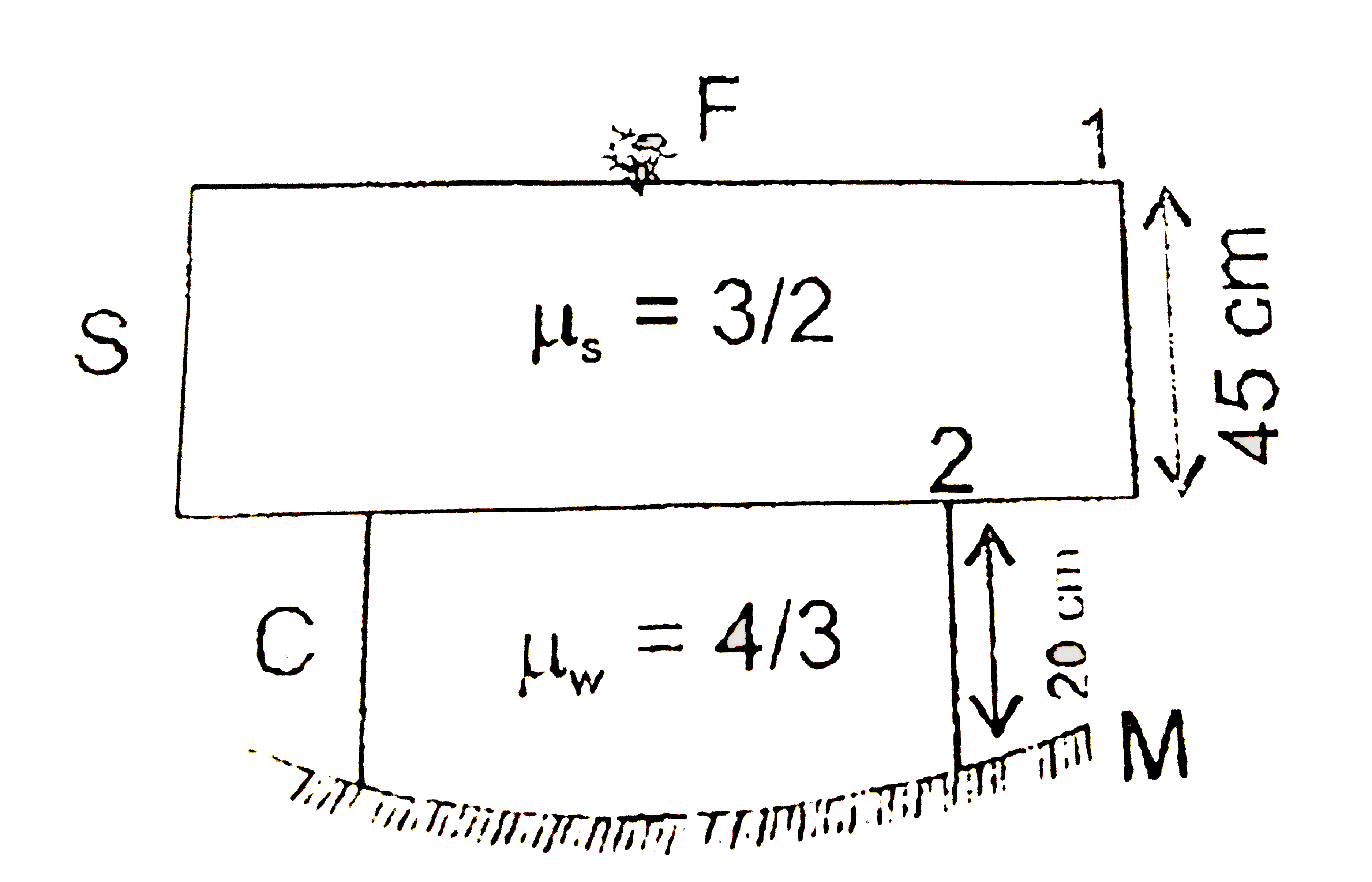Correct Answer - `((135)/(6)) cm=22.5 cm` below the upper surface of the glass slab
For refraction at surface `-2`,
`(mu_(2))/(v)-(mu_(1))/(u)=(mu_(2)-mu_(1))/(R)`
`(4)/(3v)-((3)/(2))/((-45))=0 (therefore R =infty) , therefore v=-40 cm`
For reflection from mirror,
`u=-(20 + 40) cm =- 60 cm. , f=-20 cm`
`therefore (1)/(v)=(1)/(f)-(1)/(u)` gives `v=-30 cm`
Again, for refraction from surface `-2`
`u=30 - 20 =10 cm`.
`(mu_(2))/(v)-(mu_(1))/(u)=(mu_(2)-mu_(1))/(R)` gives `(mu_(s))/(v)-(mu_(w))/(u)=(mu_(s)-mu_(w))/(R)`
`(3)/(2v)-(4)/(3xx(+10))=0 , v=(45)/(4) cm`
For refraction from surface `-1`
`u=(45-(45)/(4))cm =(3xx45)/(4)`
`(mu_(a))/(v)-(mu_(s))/(u)=0`. (thereforeR=infty)
`therefore v=(-45)/(2)=-22.5 cm`
Hence, iamge is formed `22.5 cm` below surface `1`
